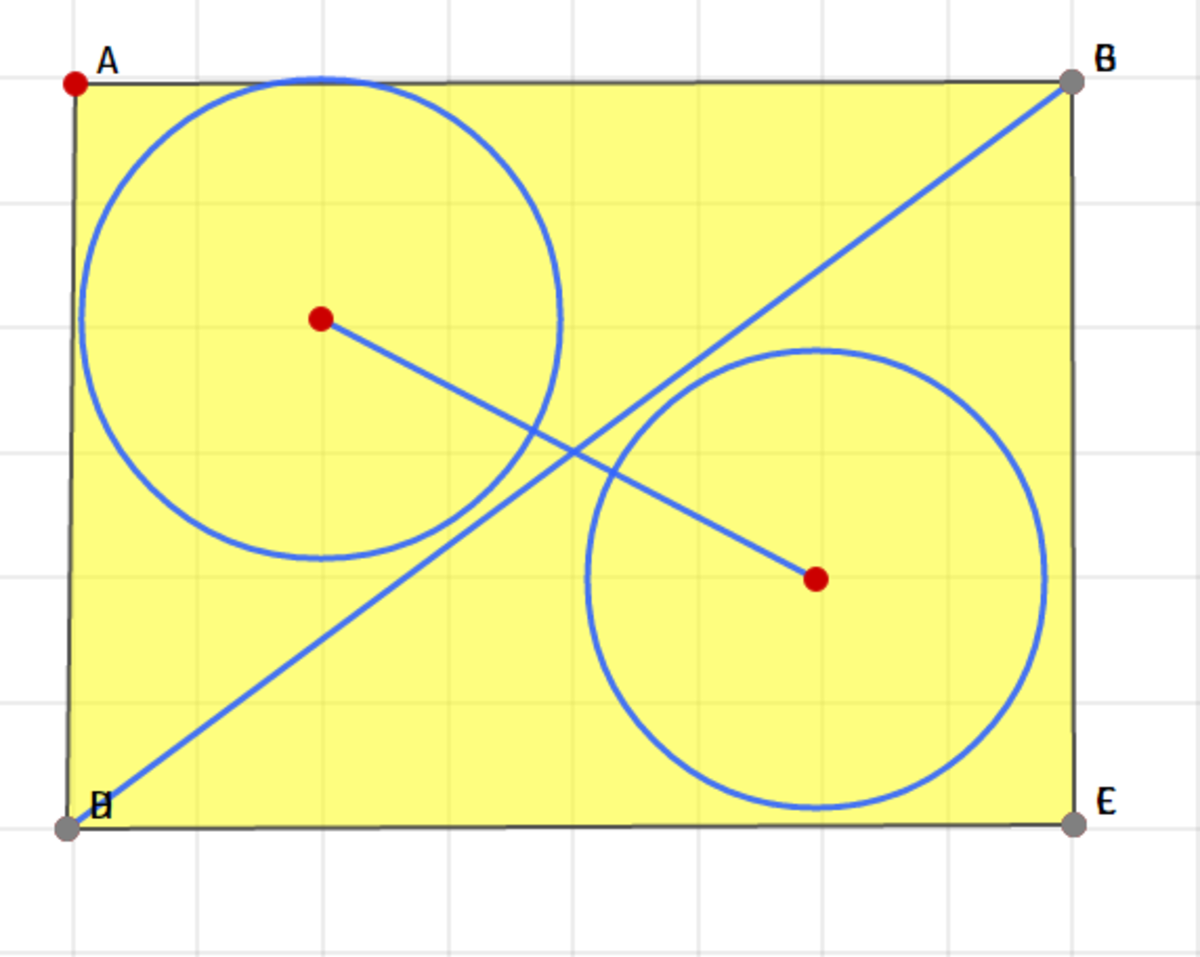A geometry problem by well max
Rectangle ABCD has side lengths AB = 4 and BC = 3. A circle with center O is inscribed in triangle ABD and a circle with center P is inscribed in triangle CDB. Segment OP has length . What is ?
This section requires Javascript.
You are seeing this because something didn't load right. We suggest you, (a) try
refreshing the page, (b) enabling javascript if it is disabled on your browser and,
finally, (c)
loading the
non-javascript version of this page
. We're sorry about the hassle.
I visualised it this way (apologies, the letters on the diagrams are unclear) You can find the radius of an incircle with the formula
p
2
a
where
a
is the area of the triangle and
p
is the perimeter. This works out to be
1
2
1
2
=
1
.
You can find the radius of an incircle with the formula
p
2
a
where
a
is the area of the triangle and
p
is the perimeter. This works out to be
1
2
1
2
=
1
.
x 2 = 5